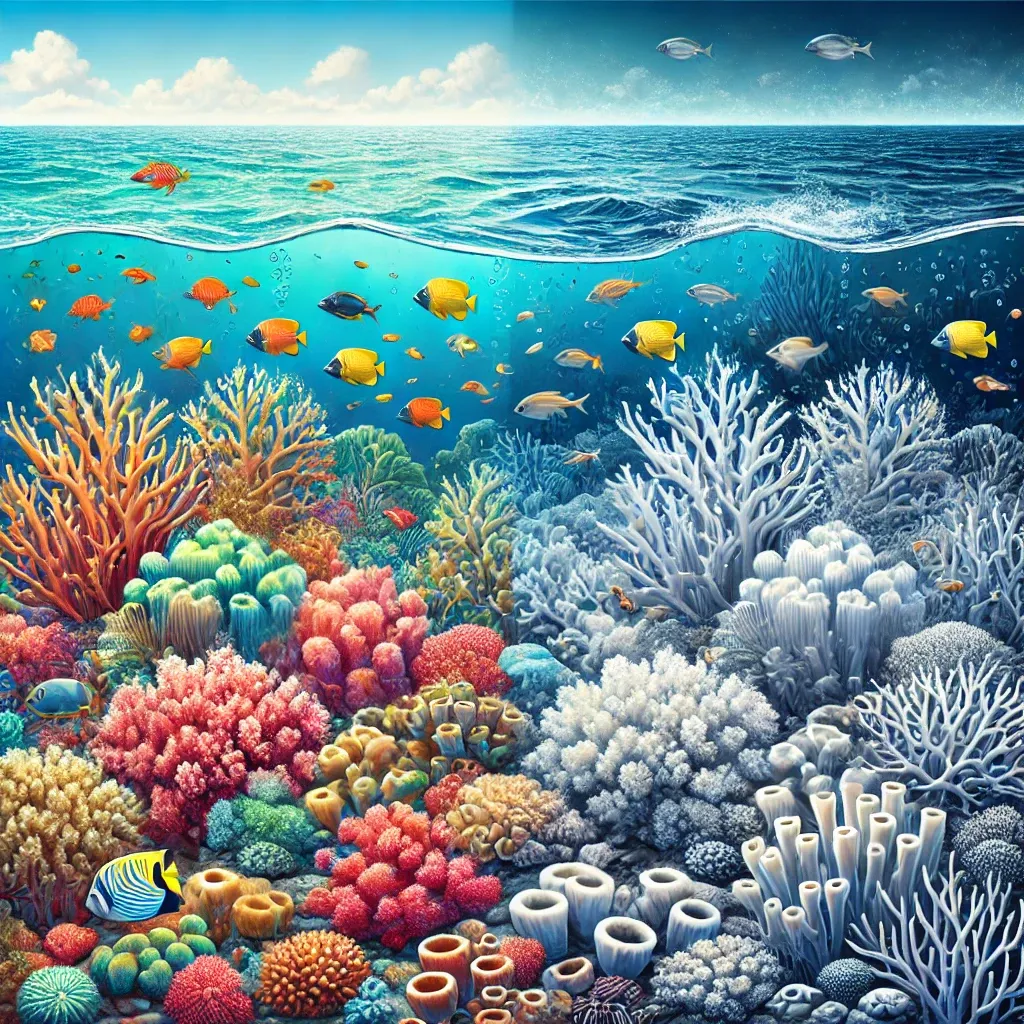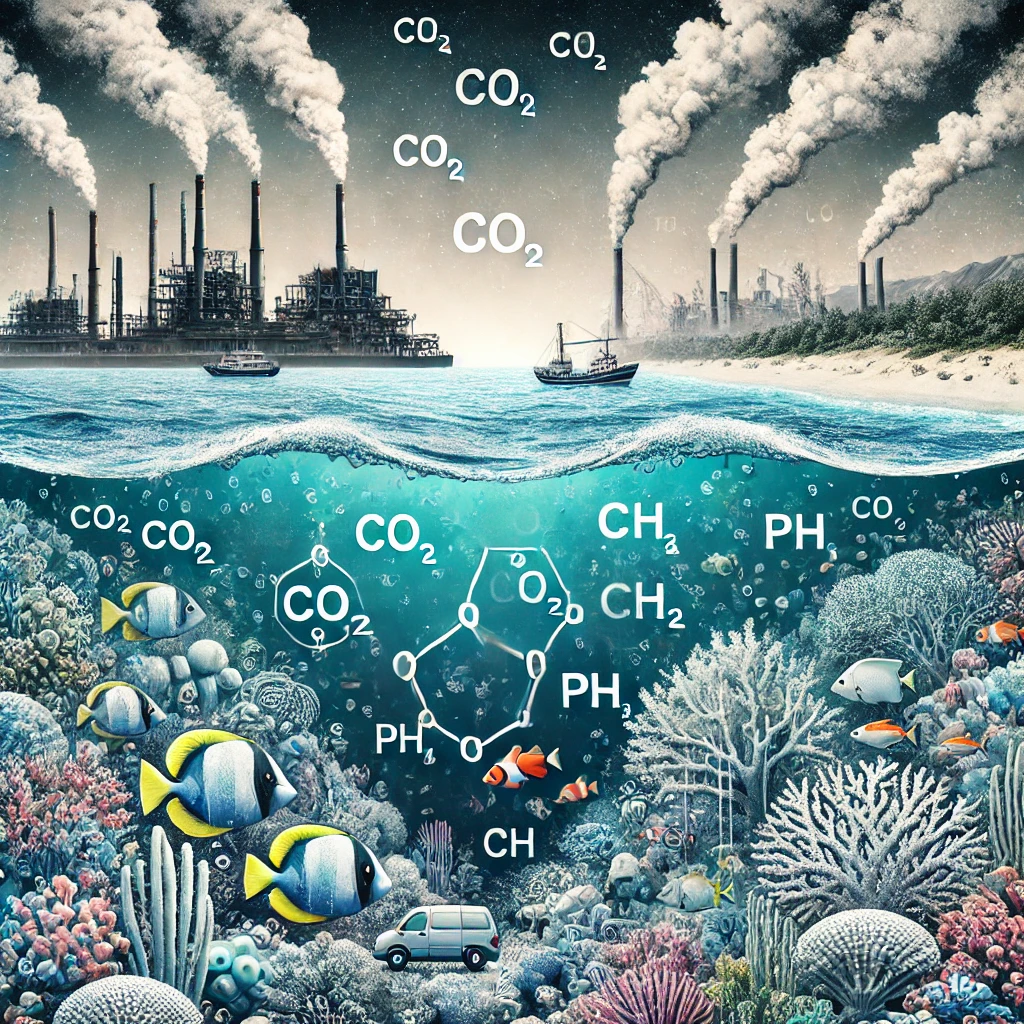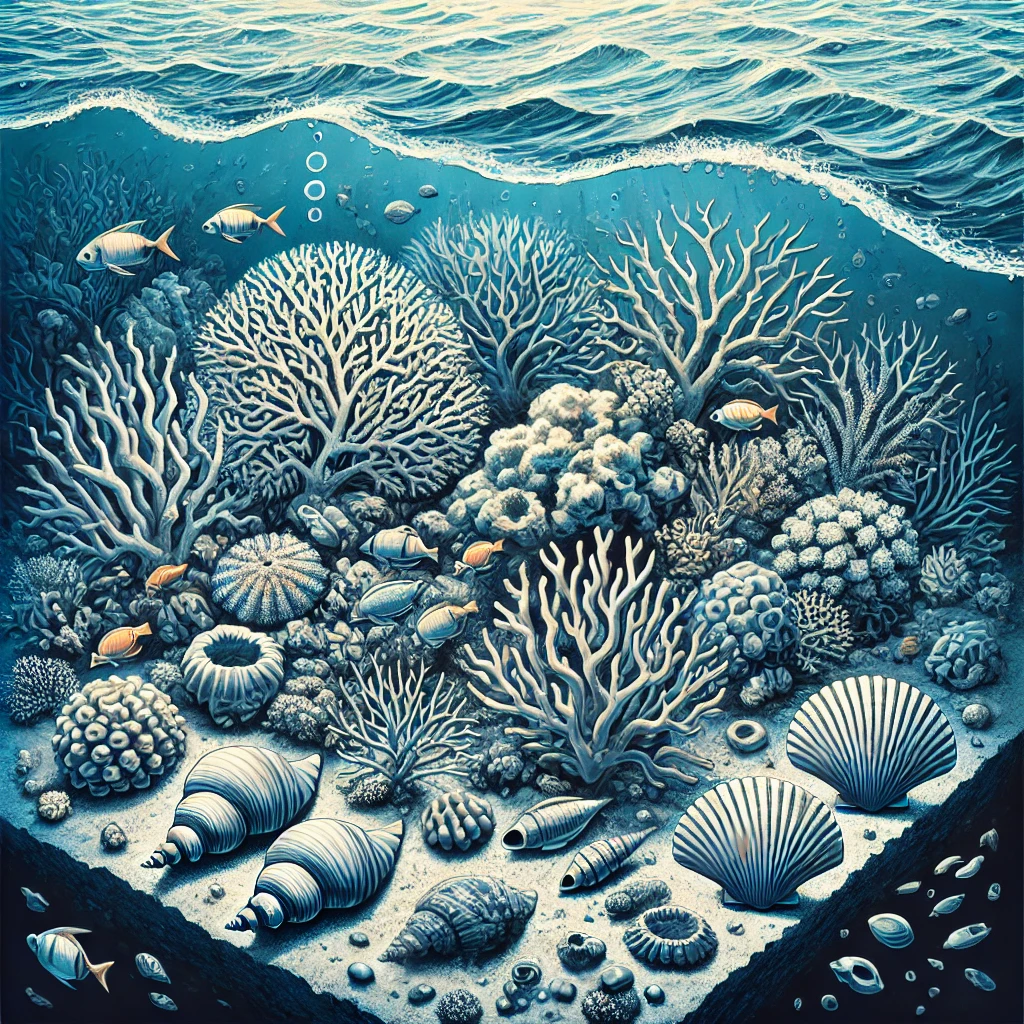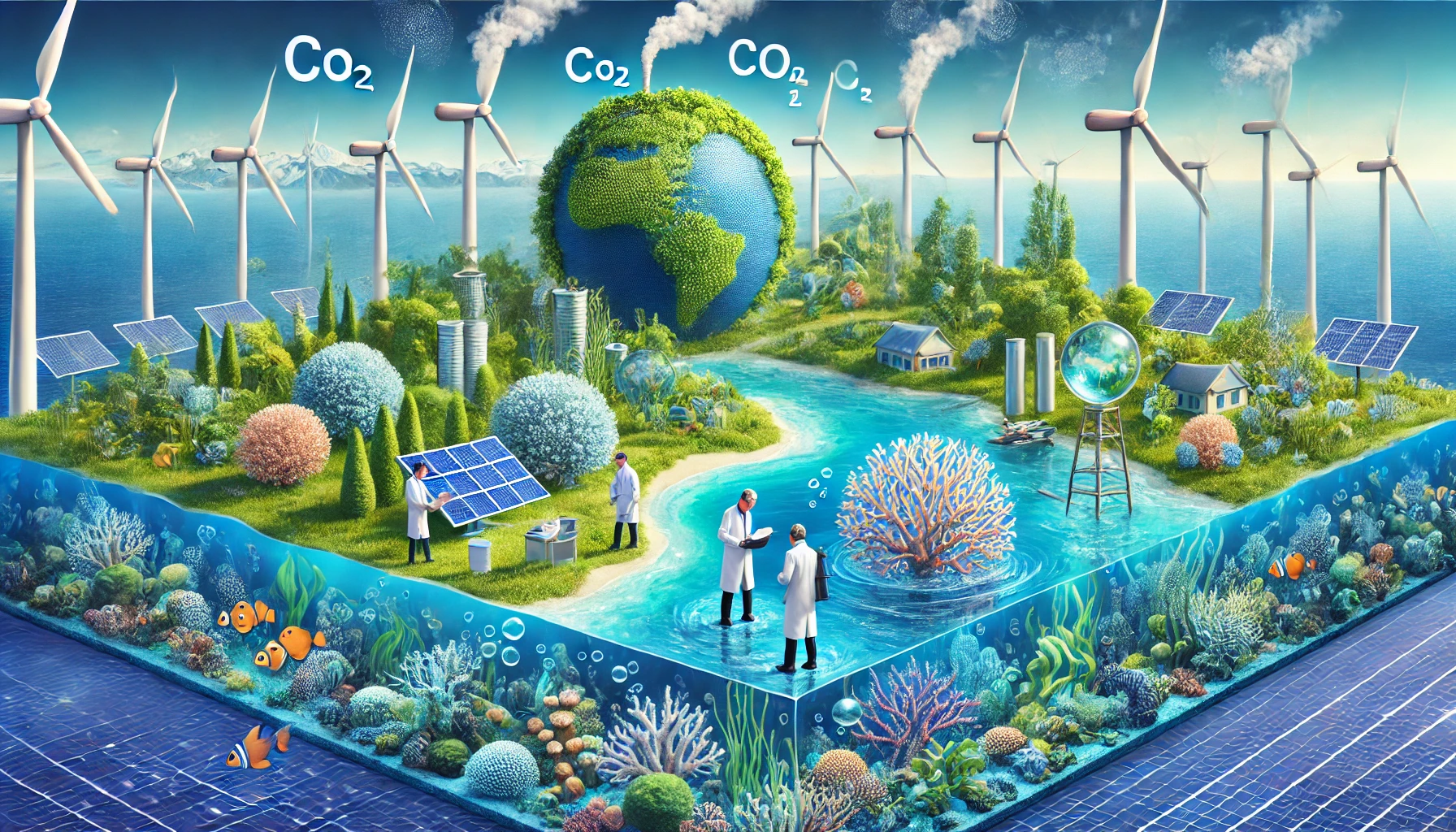Ocean Acidification (All Articles)

How does Acidic Water Impact Coral Growth?
Ocean acidification hampers coral growth, reducing rates by up to 50% and weakening skeletal density by 20%. This affects coral health, biodiversity, and the $375 billion fishing and tourism industries. How can we mitigate the effects of ocean acidification to protect coral reefs and their vital ecosystems? Read the full article to explore solutions and strategies.
CLICK HERE!
What makes the Ocean more Acidic?
Ocean acidification is primarily caused by the absorption of excess carbon dioxide (CO2) from the atmosphere into the oceans. As CO2 levels rise due to human activities like burning fossil fuels, the ocean absorbs about 30% of it, leading to chemical reactions that lower pH levels, making the water more acidic. This change affects marine life, particularly organisms with calcium carbonate shells or skeletons, like corals and shellfish. What can we do to mitigate the effects of ocean acidification? Read the full article for more insights.
CLICK HERE!
How do you measure the acidity of water?
CLICK HERE!
What happens if the ocean is acidic?
CLICK HERE!
How do carbon emissions affect the ocean?
CLICK HERE!
What is the solution to acidification?
Acidification solutions include reducing CO₂ emissions, promoting renewable energy, and restoring ecosystems like seagrass and mangroves that absorb high amounts of CO₂. Methods such as carbon capture and adding alkaline substances to oceans can neutralize acidity, while using lime in agriculture mitigates soil acidification. Reducing emissions by 50% could stabilize pH levels by 2100, ensuring biodiversity and food security. Learn more about actionable solutions to acidification here!
CLICK HERE!